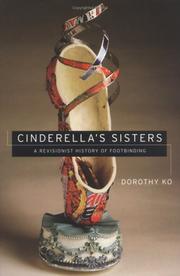| Listing 1 - 2 of 2 |
Sort by
|
Book
ISBN: 0520301366 0520972171 9780520972179 9780520301368 Year: 2019 Publisher: University of California Press
Abstract | Keywords | Export | Availability | Bookmark
 Loading...
Loading...Choose an application
- Reference Manager
- EndNote
- RefWorks (Direct export to RefWorks)
A free ebook version of this title is available through Luminos, University of California Press's Open Access publishing program. Visit www.luminosoa.org to learn more. In the post-World War I American climate of isolationism, nativism, democratic expansion of civic rights, and consumerism, Italian-born star Rodolfo Valentino and Italy's dictator Benito Mussolini became surprising paragons of authoritarian male power and mass appeal. Drawing on extensive archival research in the United States and Italy, Giorgio Bertellini's work shows how their popularity, both political and erotic, largely depended on the efforts of public opinion managers, including publicists, journalists, and even ambassadors. Beyond the democratic celebrations of the Jazz Age, the promotion of their charismatic masculinity through spectacle and press coverage inaugurated the now-familiar convergence of popular celebrity and political authority. This is the first volume in the new Cinema Cultures in Contact series, coedited by Giorgio Bertellini, Richard Abel, and Matthew Solomon. This book is freely available in an open access edition thanks to TOME (Toward an Open Monograph Ecosystem)-a collaboration of the Association of American Universities, the Association of University Presses, and the Association of Research Libraries. Learn more at the TOME website, available at: openmonographs.org.
Publicity --- Mass media and publicity. --- Communication in politics. --- Celebrities in mass media. --- Motion picture industry --- History --- Valentino, Rudolph, --- Mussolini, Benito, --- Mass media --- Political communication --- Political science --- Publicity and mass media --- Advertising --- Propaganda --- Public relations --- Mousolini, Benito, --- Mo-so-li-ni, --- Duce, --- מוסוליני, ביניטו, --- موسوليني، بنيتو، --- Valentino, Rodolfo, --- Guglielmi, Rodolfo Pietro Filiberto, --- ヴアレンチノルドルフ, --- Rudolph, --- Signor Rudolph, --- Rodolfo, --- PERFORMING ARTS / Film & Video / History & Criticism. --- ambassadors. --- america. --- american climate. --- authoritarian. --- benito mussolini. --- charismatic masculinity. --- consumerism. --- democratic celebrations. --- democratic expansion of civil rights. --- dictator. --- isolationism. --- italian born star. --- italy. --- jazz age. --- journalists. --- male power. --- nativism. --- political popularity. --- post world war 1. --- public opinion. --- publicists. --- rodolfo valentino. --- united states. --- Mussolini, Benito Amilcare Andrea,

ISBN: 0520218841 9780520218840 9786612360435 0520941403 9780520941403 9780520253902 0520253906 1282360434 9781282360433 Year: 2007 Publisher: Berkeley, Calif. London University of California Press
Abstract | Keywords | Export | Availability | Bookmark
 Loading...
Loading...Choose an application
- Reference Manager
- EndNote
- RefWorks (Direct export to RefWorks)
The history of footbinding is full of contradictions and unexpected turns. The practice originated in the dance culture of China's medieval court and spread to gentry families, brothels, maid's quarters, and peasant households. Conventional views of footbinding as patriarchal oppression often neglect its complex history and the incentives of the women involved. This revisionist history, elegantly written and meticulously researched, presents a fascinating new picture of the practice from its beginnings in the tenth century to its demise in the twentieth century. Neither condemning nor defending foot-binding, Dorothy Ko debunks many myths and misconceptions about its origins, development, and eventual end, exploring in the process the entanglements of male power and female desires during the practice's thousand-year history. Cinderella's Sisters argues that rather than stemming from sexual perversion, men's desire for bound feet was connected to larger concerns such as cultural nostalgia, regional rivalries, and claims of male privilege. Nor were women hapless victims, the author contends. Ko describes how women-those who could afford it-bound their own and their daughters' feet to signal their high status and self-respect. Femininity, like the binding of feet, was associated with bodily labor and domestic work, and properly bound feet and beautifully made shoes both required exquisite skills and technical knowledge passed from generation to generation. Throughout her narrative, Ko deftly wields methods of social history, literary criticism, material culture studies, and the history of the body and fashion to illustrate how a practice that began as embodied lyricism-as a way to live as the poets imagined-ended up being an exercise in excess and folly.
S11/0710 --- S11/0742 --- China: Social sciences--Women: general and before 1949 --- China: Social sciences--Footbinding --- Footbinding --- Bandage des pieds --- History --- Pathology --- Sociology of the family. Sociology of sexuality --- Human physiology --- China --- Binding of feet --- Foot --- Foot-binding --- Deformities, Artificial --- Artificial deformities --- Binding --- Abnormalities --- Social aspects. --- Feet --- Paw --- Paws --- Leg --- age of disavowal. --- beauty. --- china. --- chinese culture. --- chinese history. --- cultural nostalgia. --- dance culture. --- embodied lyricism. --- fangzu. --- fashion and clothing. --- female body. --- female desire. --- femininity. --- footbinding. --- gender expectations. --- gender performance. --- gender studies. --- high status. --- historical. --- history. --- imaginary geography. --- male desire. --- male power. --- male privilege. --- material culture studies. --- medieval court. --- men and women. --- patriarchal oppression. --- political. --- regional rivalry. --- self respect. --- social history. --- tianzu. --- Mutilations --- Images of women --- Female body --- Book
| Listing 1 - 2 of 2 |
Sort by
|

 Search
Search Feedback
Feedback About UniCat
About UniCat  Help
Help News
News